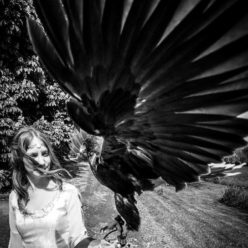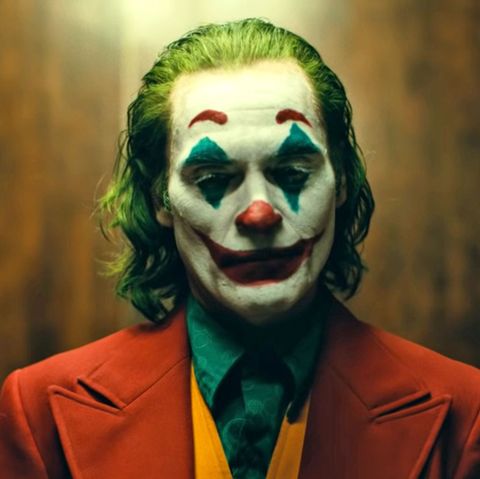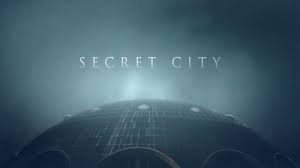I have, of course, joined a book club. And our first book is
the above titled Secret City; a
thriller about political subterfuge and scandal in Canberra. I imagine the
Brexit equivalent would wilt in comparison. The verdict? In a nutshell: pile of
wank.
There is a Foxtel series based on this book. And no doubt it’s
very compelling; I’m looking forward to watching some of it myself. Because by
watching scenes of Canberra, filmed with well timed lighting, with real people
to represent characters, you can engage your own emotional responses where the
writers’ choice to not really bother describing anything frankly failed to do
so.
Canberrans who have seen bits of this show do find it a bit of a chuckle. It portrays our small little town (beautiful and remarkably well designed, but little nonetheless) as somewhere glossy, sophisticated and impeccably suave. Which from what I’m gathering has about the same impact on a native as a show about the suave and imperatively important life of a bunch of people working in Chelmsford local council would. The writing does the same; name dropping places with the carelessness of a toddler with lego, adding adjectives to help you out because no one really knows Canberra – ‘prestigious,’ ‘stylish,’ ‘sophisticated,’ ‘exclusive.’ Which conspires to kill your very imagination and effort to find a bit of soul in the place. The descriptions of places are done without heart, without love, just bland one-worders that create a half-hearted image of somewhere cool and interesting. Like when you walk past an All Bar One after a long day at work, and think it looks all fun and stylish with people drinking cold wine in nice shoes and there are fairy lights and warm wood surfaces…but it quickly passes because you remember the atmosphere is about as barren as a salt field and you congratulate yourself on a lucky escape; nice shoes and tall wine glasses are not for you and you retire thankfully to your local that smells a bit and get a pint of warm ale. Because it has soul.
Soul in a place is important and I am worried this book has killed my poetic imagination of soul in Canberra.
I like to read about places. I like to immerse myself; building a construct, a sense of beauty and wonder about a place that I can romanticise is half the anticipation of travel. It’s how I connect to place. These two writers; ex political journalists, must have been excellent headline writers with their sassy verb and adjective choices, but they are not great writers. Miles Franklin, Kim Scott, even fucking Lawrence (and as you may know, I have a lot of opinions about D.H. Lawrence, but damn me, at least he creates a sense of place) actually bother to inspire you with a bit of love in a setting. These two didn’t. And to be great literature, writing must do that, as people and place are tied intrinsically, constantly referring to the other to create the human experience.
Perhaps I’m totally over thinking the thriller genre. Great Literature is not its scope. It just makes me cross that good writers wouldn’t bother. And Henning Mankell made a better job of creating atmosphere and engendering the whole scandi-noir genre, so there’s no excuse. Now: the nitty gritty. The book was hideously formulaic. Every new character introduced had a one paragraph fecking CV; description of their degree and previous ten years, peppered with adjectives like ‘high flying,’ ‘razor sharp mind’ and ‘holy roller’ so you get the idea that, you know, this guy’s a big deal. After that, nothing else they either did or said did a damn thing to develop that one dimensional character any further. Sloppy. So imagine my surprise when I read the blurb for the third book (yes, it’s still not fucking over) introducing ‘loveable journalist Harry Dunkley.’ He wasn’t loveable!! He was a bland bloke whose love of ‘chasing down a good yarn’ and ‘getting the papers in the morning’ was described at least four times in exactly the same goddamn way as if that sufficiently constitutes a personality. An effort to give him depth was the throw away mention of his estranged daughter who occasionally he’d miss a bit but couldn’t be fucked to do anything about it for 784 pages. If anything, he was a bit of a dick. He had a girlfriend, right, which was supposed to be a bit of a tension riser isn’t it, because now he’s got something to lose as he closes in on stuff he’s not supposed to know, and he could never get over the fact she was twenty two years younger. He mentions it three times. It must have been written explicitly for screenplay because there were these periodical recaps and I’m like, Harry? Have you forgotten you told me this already, 300 pages ago? I know, it was a long time. *It felt like it for me too.* Then when the young girlfriend goes off in an unconvincing childish strop and the inevitable attack happens (we saw it the minute he got with her, chaps), she dumps him, and later she tries to ring him, and he ignores her call!! She’s taken a knife to the throat for him, and he gets a bit wrapped up in himself and is now too busy for her, despite being gutted about being dumped and ‘racked with guilt’ as he kept saying. Well, not that guilty.
The Pencil of Rage came out with the portrayals of China and the Chinese. I’ve been reading books on China since these two journos turned up in Canberra as green little reporters twenty five years ago; you know, there’s a lot there what with thousands of years of culture and history and a billion people and I’ve never read such boringly obvious portrayal of a Bad Guy. A character defects, overcoming a life time of carefully tuned ‘education’ because….ooh, we need something emotional to make it convincing…er….fuck it, dead mother. Again, not developed enough to suggest why this character would defect in this circumstance when thousands of others wouldn’t. Lovely bit of world building in ‘Beijing’ ‘a Chinese melody drifted in the background.’ Who needs research eh? And a Chinese woman was described as ‘delicate’ no fewer than three times on one page, confirming all negative stereotypes about the submissiveness and mutability of Chinese women.
Then there was the needless transvestite. I don’t really
understand why one character had to be trans. It added nothing to the story.
But it was made a big deal of, so it’s not just a general diversity of some
characters are black, some are Asian, some are trans. In fact, apart from a
couple of Chinese, conspicuously painted as sinister or subversive, there was a
complete lack of diversity. And this is the point for me.
Because all these people, swelled with power, feeding their greed and arrogance by dashing about the city at high speed were essentially dicks who demonstrated, despite all their qualifications in economics, no understanding of the real world and its struggles at all. The effects of poverty. Mental health (despite the ‘Mental Health Plan’ the fictitious government unsuccessfully tries to get through the house of representatives, mainly to show the Prime Minister is ‘a good guy,’), the ostracization of first nation people. As an immigrant outsider whose qualifications seem to count for shite, having daily battles with getting out of bed and the wine, it was quite depressing reading. Like I should have tried harder in my career to be important high fliers like these dudes. More assurance from Australia that I’m not good enough, from terribly constructed not-real people.
It is fascinating ear-wigging conversation in this town. Walking
past people on their phones or those strolling in pairs (invariably young, athletic
types in brown shoes and blue trousers; no blazers) you do catch snippets of Very
Important Sounding Things. But is there a disconnect between them having coffee
and important conversations (soooo different from teaching where you GET in
your classroom, STAY in there, DON’T come out for seven hours, BE inspiring, NO
you can’t leave to piss) and the real people they serve?
Look, like the aboriginals. The big elephant in Australian society who are miraculously unrepresented in this city. I have never seen such a white city. Lots of young east Asians at the university and, it seems, applying for hideously boring accounting systems jobs, but apart from that, very little diversity. And this troubles me. Before finishing the crap book, I read a great one about Noongar people of western Australia; struggling with their disenfranchisement and the bad choices they make based on their…lack of choices. Drugs, alcohol, abuse. How to reconnect with an ancient past that is spiritual and beautiful, solace against the modern world that probably many also want to engage with; combining success in modern Australian society through education and inclusion with celebrating traditions. These people were returning to their homeland as traditional owners, but now there are fences, a certain area is a holiday caravan park and the owners don’t have much sympathy for their free movement. After visiting the aborigine exhibition at the national museum, I was quite appalled and upset. How can white people live on the land, daily staring in the face of those they stole it from? Even in America, they wiped out most of the first nation peoples so used the place as a blank canvas to construct their national identity. Which is something Australians struggle with – a sense of belonging, constructing their identity out of ANZAC day – bloody violence and war. That’s not a cultural identity. I’ve had many discussions about this with Morris dancers, who feel connections with the village of their ancestors in England (I did mention this was merely inbreeding, and not meaningful), who know more about regional dances than I do and sort of sometimes miss the point of it being ‘folk;’ of the people, who change and grow. Australian identity is something that is still growing. And I think it should. Because, being a remainer, right, I’m quite into immigration. I am one. And after considering, then rejecting the idea that we can’t send all the white people in Australia back (I would revolt if someone said the reverse in England), there has to be a way for first nation and immigrants to unite over their love of this land. Because we do love it, I love it. I love beaches and emus and kangaroos! Anyone who doesn’t has no soul. And that is something that can bind us. Love, of course.
Which brings me back to finding soul. Apparently the hill where Parliament sits is a significant site for the Ngunnawal people – it is a woman’s mountain and important for their rituals. Not so easy to wander up there anymore and continue your culture. It’s like there was soul here, but perhaps nasty politicians took it all. And in looking for soul, I see it more in the trees and the hills than I do in this city. So I’m still looking for it. I’m finding it in odd little alleyways, cluttered with parked cars, murals painted on the wall and a load of bins…which is the secret entrance for a funny little windowless cocktail bar. I’m finding it under the trees at a cheap taco place round the corner from my flat, where they always seem to have secret meat you can just ask for. (Not a euphemism.) And I find it in the brilliant Smiths Alternative bar and music venue that doesn’t get a look-in in that stupid book because its ripped up, weathered sofas that render the pavement a hazard under the arcades of the Melbourne building is the sweet home of the Lost. Students lie on sofas all day, homeless men and women take their rest and drink the free water, smoking and reading the books; hippies resolutely not wearing shoes will play the piano and there is a particular smell. And, marvellously, good wine.
There we go.


